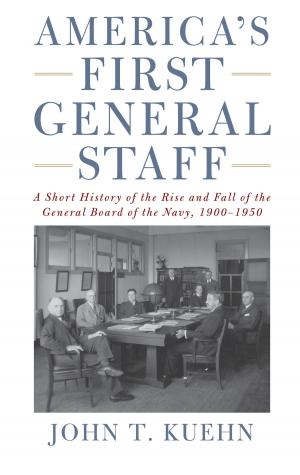| Author: | John R. Ballard | ISBN: | 9781612510057 |
| Publisher: | Naval Institute Press | Publication: | December 7, 2010 |
| Imprint: | Naval Institute Press | Language: | English |
| Author: | John R. Ballard |
| ISBN: | 9781612510057 |
| Publisher: | Naval Institute Press |
| Publication: | December 7, 2010 |
| Imprint: | Naval Institute Press |
| Language: | English |
Covering both Operation Desert Storm and Operation Iraqi Freedom as two campaigns within a single, if discontinuous, conflict, this book analyzes the strategic interaction between Iraq and the United States from 1990 to 2010 and the key operational decisions that determined the course of the war. The author’s assessment of the long war against Iraq includes misunderstandings between government leaders in Iraq and the United States that led initially to war, ineffective UN sanctions, inefficient efforts by the Clinton administration, and uncoordinated actions by the Bush administration that then led to a preemptive strategy, continuation of conventional combat, and the evolution of an Iraqi insurgency.
Ballard’s thorough examination of these multiple operations within the context of a single conflict provides readers with rare and insightful perspectives on the complexity of modern war and the challenges of operational command. He first identifies the influence of the Vietnam era on the use of U.S. military power and the decision for war in 1990 and then outlines the important factors of Iraqi history and culture that dominated relations between the two nations during the 1980s and 1990s. Subsequent chapters examine the conduct of Desert Storm from the American and Iraqi perspectives and the military, economic, and diplomatic actions of the period between the two conventional campaigns. Final chapters analyze the 2003 offensive on Baghdad, the postwar stabilization operations that began with the failure to transition under the Coalition Provisional Authority, and the eventual implementation of a warfighting strategy that combined new doctrine and a surge of forces to protect the population in a renewed counterinsurgency campaign. A concluding chapter reviews key lessons for the future, including the importance of effective strategic decision making and the operational mindset required to prosecute modern war successfully.
Covering both Operation Desert Storm and Operation Iraqi Freedom as two campaigns within a single, if discontinuous, conflict, this book analyzes the strategic interaction between Iraq and the United States from 1990 to 2010 and the key operational decisions that determined the course of the war. The author’s assessment of the long war against Iraq includes misunderstandings between government leaders in Iraq and the United States that led initially to war, ineffective UN sanctions, inefficient efforts by the Clinton administration, and uncoordinated actions by the Bush administration that then led to a preemptive strategy, continuation of conventional combat, and the evolution of an Iraqi insurgency.
Ballard’s thorough examination of these multiple operations within the context of a single conflict provides readers with rare and insightful perspectives on the complexity of modern war and the challenges of operational command. He first identifies the influence of the Vietnam era on the use of U.S. military power and the decision for war in 1990 and then outlines the important factors of Iraqi history and culture that dominated relations between the two nations during the 1980s and 1990s. Subsequent chapters examine the conduct of Desert Storm from the American and Iraqi perspectives and the military, economic, and diplomatic actions of the period between the two conventional campaigns. Final chapters analyze the 2003 offensive on Baghdad, the postwar stabilization operations that began with the failure to transition under the Coalition Provisional Authority, and the eventual implementation of a warfighting strategy that combined new doctrine and a surge of forces to protect the population in a renewed counterinsurgency campaign. A concluding chapter reviews key lessons for the future, including the importance of effective strategic decision making and the operational mindset required to prosecute modern war successfully.















